The Meizu PRO 5 Review
by Matt Humrick on June 24, 2016 8:00 AM EST- Posted in
- Smartphones
- Exynos
- Mobile
- Meizu
- Exynos 7420
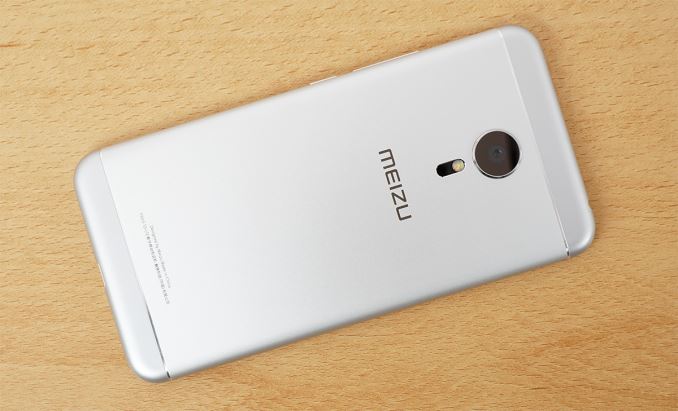
The dominance of the smartphone market by Apple and Samsung is being challenged by several Chinese brands that are delivering surprisingly well-featured phones for a fraction of the price. Meizu, one of the smaller Chinese OEMs based on sales volume, trails Huawei, OPPO, and Xiaomi in market share, but is gradually building its brand centered around design and build quality.
The Meizu PRO 5 has been available for some time now, and has even been supplanted by the PRO 6 as the company's flagship device, but Meizu plans to continue selling the PRO 5 alongside the newer version for the foreseeable future at a reduced price. The PRO 5 itself follows the MX5 and is the successor to the MX4 Pro, adopting a new naming convention that further separates it from the midrange MX series.
Besides Samsung, Meizu is one of the few OEMs to use Samsung LSI’s Exynos SoCs, and the PRO 5 is the only other phone outside of Samsung’s more expensive Note5 and Galaxy S6 family to specifically use the Exynos 7420. Introduced in 2015, the Exynos 7420 is notable for being the first commercially available mobile SoC to use FinFET technology, which has less leakage than planar transistor technologies and higher subthreshold swing enabling lower overall power consumption. The 7420’s octa-core CPU—consisting of four higher-performing Cortex-A57 cores running at up to 2.1GHz and four lower-performing but lower-power Cortex-A53 cores running at up to 1.5GHz—and Mali-T760MP8 GPU are manufactured on Samsung’s 14nm LPE process.
The PRO 5 comes in two different configurations: one with 3GB of LPDDR4 RAM and 32GB of UFS 2.0 NAND and one that expands memory and internal storage to 4GB and 64GB, respectively. Both configurations support microSD cards to further expand storage.
| Meizu 5 Series | ||
| Meizu PRO 5 | Meizu MX5 | |
| SoC | Samsung Exynos 7420 4x Cortex-A57 @ 2.1GHz 4x Cortex-A53 @ 1.5GHz Mali-T760MP8 @ 772MHz |
MediaTek Helio X10 (MT6795) 8x Cortex-A53 @ 2.2GHz PowerVR G6200 @ 700MHz+ |
| RAM | 3GB / 4GB LPDDR4-3104 | 3GB LPDDR3-1600 |
| NAND | 32GB / 64GB (UFS 2.0) + microSD |
16GB / 32GB / 64GB (eMMC 5) |
| Display | 5.7-inch 1920x1080 SAMOLED | 5.5-inch 1920x1080 SAMOLED |
| Dimensions | 156.7 x 78.0 x 7.5 mm 168 grams |
149.9 x 74.7 x 7.6 mm 149 grams |
| Modem | Samsung Shannon 333 2G / 3G / 4G LTE (Category 6) FDD-LTE / TD-LTE / TD-SCDMA / WCDMA / GSM |
MediaTek (Integrated) 2G / 3G / 4G LTE (Category 4) FDD-LTE / TD-LTE / TD-SCDMA / WCDMA / GSM (Chinese Bands) |
| SIM Size | 2x NanoSIM (dual standby) | 2x NanoSIM (dual standby) |
| Front Camera | 5MP, 1/5" OmniVision OV5670, 1.12μm, f/2.0 | 5MP, f/2.0 |
| Rear Camera | 21.16MP, 1/2.4” Sony IMX230 Exmor RS, 1.12µm pixels, f/2.2, PDAF + Laser AF, HDR, dual-tone LED flash | 20.7MP, 1/2.3” Sony IMX220 Exmor RS, 1.2µm pixels, f/2.2, Laser AF, HDR, dual-tone LED flash |
| Battery | 3050 mAh (11.59 Wh) non-replaceable |
3150 mAh (11.97 Wh) non-replaceable |
| Connectivity | 802.11b/g/n/ac, BT 4.1 LE, NFC, GPS/GNSS, USB 2.0 Type-C | 802.11b/g/n/ac, BT 4.1 LE, GPS/GNSS, microUSB 2.0 |
| Launch OS | Android 5.1 with Meizu FlymeOS 5.1 | Android 5.0 with Meizu FlymeOS 4.5 |
| Launch Price (No Contract) |
¥2799 / ¥3099 $438 / $485 USD |
¥1799 / ¥1999 / ¥2399 $290 / $320 / $386 USD |
The Meizu PRO 5 uses a 21MP Sony IMX230 Exmor RS sensor for the rear camera, the same sensor the Moto X Pure Edition uses, paired with a dual-tone LED flash. It also includes a hybrid autofocus system that combines the strengths of laser, phase detection (PDAF), and traditional contrast detection methods—an uncommon feature, especially at this price point—which should give the PRO 5 excellent focusing performance in a variety of lighting conditions. The PRO 5’s rear camera does not support HDR when recording video or offer a 1080p60 recording mode, which is disappointing, but it does record 4K video using the newer H.265 codec, which is something even the most expensive flagships do not support.
Along with the Exynos 7420 SoC, Meizu is also using Samsung’s Shannon 333 baseband processor that supports GSM/EDGE (900/1800/1900 MHz), WCDMA (bands 1/2/5/8), and TD-SCDMA (bands 34/39), but not CDMA2000. It also supports Category 6 LTE speeds up to 300 Mb/s down and 50 Mb/s up with carrier aggregation. The PRO 5’s LTE support is primarily focused on its Chinese home market offering FDD-LTE (bands 1/3/7) and TD-LTE (bands 38/39/40/41). For our readers in the U.S., the PRO 5 will operate on AT&T’s and T-Mobile’s 3G/4G UMTS/HSPA+ networks, but there’s no LTE support.
The PRO 5’s card tray accepts one NanoSIM and one microSD card or two NanoSIM cards. When using both SIM slots, it’s possible to select which one will support 2G/3G/4G networks for voice and data and which one will be for GSM voice only. The slots are Dual Active, meaning you can have two different phone numbers active at the same time, which is useful when using a single phone for both personal and business use or when traveling abroad.
Unlike many other flagship phones that have different hardware models with frequency support tailored to specific regions or carriers, there’s only one model of the PRO 5. Meizu does have two different versions of its operating system, however; there’s a generic international version that comes with Google’s apps and better language support and a Chinese version that lacks Google’s apps but comes with additional apps and services for Chinese customers.
Design
The PRO 5 adopts the same clean design language, materials, and construction techniques used in the MX5. The aluminum chassis has a fine sandblasted finish and generously radiused corners, giving it a comfortable in-hand feel that is very similar to that of an iPhone. The PRO 5 is also nearly the same size as an iPhone 6s Plus despite its larger screen. Compared to the Moto X Pure Edition and Nexus 6P, which both have 5.7-inch screens, the PRO 5 is a little larger than the Moto X overall and essentially the same width and thickness as the Nexus 6P, but comes in 2.6 mm shorter. The PRO 5 is lighter than all three (iPhone 6s Plus, Moto X Pure Edition, Nexus 6P), but still has enough heft and stiffness to give it an aura of quality.
The front is covered in edge-to-edge glass with a small radius around the perimeter where it blends into the polished, chamfered edge of the aluminum chassis. I’m not sure to what specification the aluminum is heat treated, but the used review unit we received already had many fine scratches on this polished chamfer, implying the metal may be a little soft and prone to scratching. Thankfully, the black border around the 5.7-inch screen is very thin, and the bezels along the sides are also reasonably thin.
Centered above the screen is the phone’s earpiece, whose small size relative to the rest of the phone makes it difficult to hear phone conversations sometimes if it’s not aligned perfectly with the ear. This is an issue I’ve noticed on other phablets too, most notably the iPhone 6s Plus. The ambient light/proximity sensor and front-facing camera are both positioned to the right of the earpiece, with the camera furthest from center. A white notification LED is hidden just to the left of the earpiece.
There’s a physical home button below the screen that also functions as a touch-based fingerprint sensor using Meizu’s mTouch 2.1 technology. The capacitive sensor is supplied by Fingerprint Cards, and works quite well. It has no issues with changes in finger orientation or position, assuming you’ve done your part during the setup process, and even handles mild changes in dampness and temperature. Fingerprint recognition also occurs very quickly. The pill-shaped button itself is surrounded by a polished accent ring, and while it does not feel mushy, it does not provide a positive click either.
The rounded edges flow smoothly into the phone’s back, improving comfort. A 3.5 mm headphone jack and secondary microphone for noise cancellation are located on the top edge, while the primary microphone and single, downward-firing speaker flank a USB Type-C port on the bottom. There’s a card tray on the left edge that can hold either two NanoSIM cards or one NanoSIM and one microSD card. The power button and single-piece volume rocker sit just above the midpoint on the right edge inside a polished groove. The buttons depress with a solid click, but they are not held firmly in place; there’s just a hint of free play.
The prominent feature on the back is the large, circular surround for the rear camera. Located near the top edge, its polished metal ring and sapphire protective lens protrude from the back, but not enough to catch on things when slipping it into a pocket or purse. Just below the camera is a flush-fitting, pill-shaped module for the dual-tone flash and laser autofocus system.
In place of the plastic antenna lines we usually see on all-metal phones, the PRO 5 has polished slots machined into the chassis. These are purely decorative, however, because the antennas are actually hidden behind plastic inserts in the upper and lower portions of the back. The inserts are then painted to match the look and feel of the chassis’ metallic finish. Even though the color does not match exactly in certain lighting conditions, this method of hiding the antennas is less controversial than the method used by the LG G5.
The PRO 5 comes in four different color combinations, including silver with white front like our review unit, silver with black front, gray with black front, and gold with white front. None of these colors, like the phone’s aesthetic, are flashy or cheap looking. Instead, the PRO 5 has a clean, tasteful appearance not unlike many other metal phones.


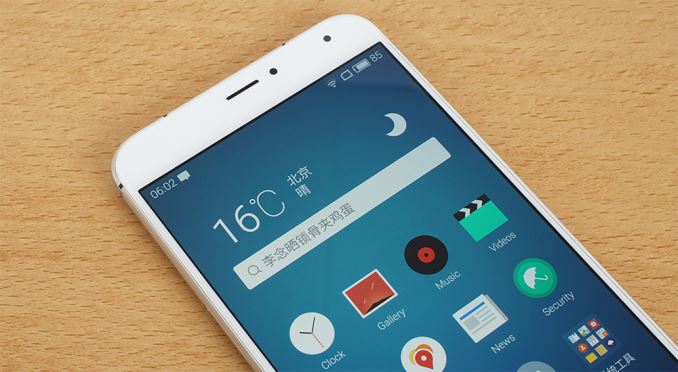

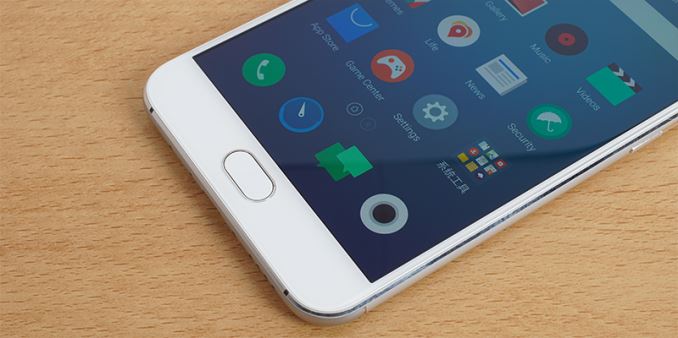
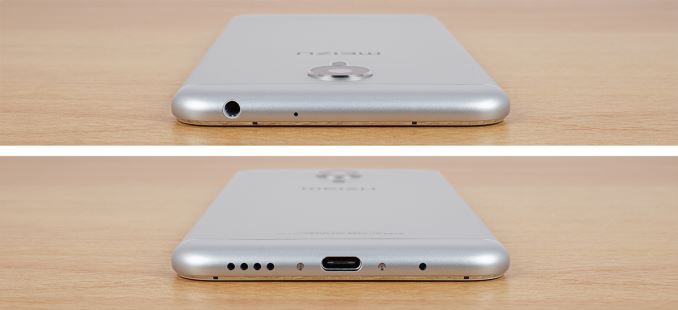
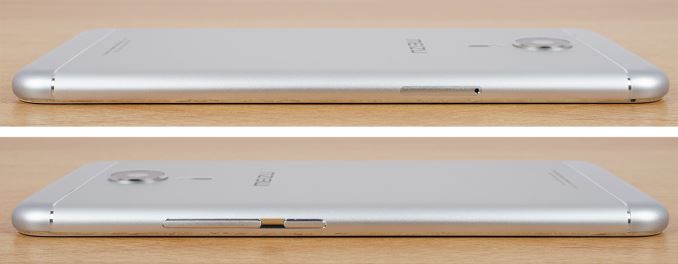
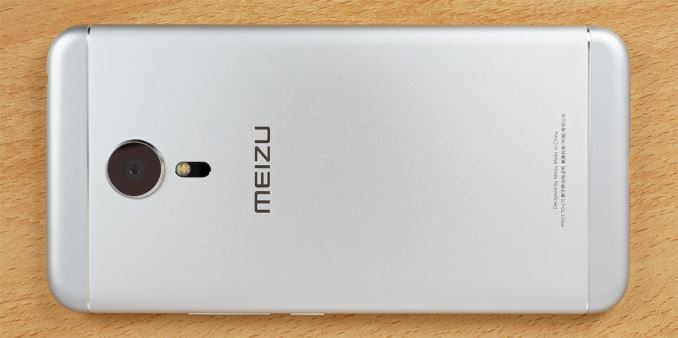








80 Comments
View All Comments
Matt Humrick - Friday, June 24, 2016 - link
A few reasons:1) AnandTech has a global audience and we're trying to be more inclusive.
2) The Chinese OEMs are becoming increasingly relevant. Huawei is the third largest smartphone company by volume, for example.
3) Not all of the Chinese phones are bad.
4) Coincidence. Between a bevy of new device announcements and new relationships with companies, we received a windfall of devices from Chinese OEMs this spring. Also, some of our reviews are behind schedule (you may have noticed :), which jumbles the publishing order.
Will you continue to see reviews of devices from China? Yes. But we're not going to forget our readers in the US.
LiverpoolFC5903 - Tuesday, July 5, 2016 - link
Meizu is one of the best Chinese odms out there, with impeccable build quality and nice little innovations like the multifunctional home button that recognizes a tap as well as is mechanically click able.Love the fact that AT is doing more reviews of Chinese phones. Quite a few of Europeans are starting to import directly from China.
The beloved iPhone is also fully manufactured in China as well so readers would do well not to raise non existent quality issues.
justaway2 - Friday, June 24, 2016 - link
What's the point of reviewing phones that doesn't support North American LTE bands properly? This is a North American review site, after all. Band 7 and 38 are sparingly used in some spots in Canada, and 41 is only used on Sprint in the US. The rest are useless in NA.LTE band 1(2100), 3(1800), 7(2600), 38(2600), 39(1900), 40(2300), 41(2500)
It really bothers me how essentially no reviews ever talk about LTE band support.
BrokenCrayons - Friday, June 24, 2016 - link
This might be a surprise, but there are a lot of people on the planet that don't live in North America.justaway2 - Friday, June 24, 2016 - link
Is Anandtech not a North America-based site catering to a North American readership?There's 1.4B people living in China. Why isn't Anandtech publishing articles in Chinese?
Impulses - Friday, June 24, 2016 - link
I don't think the writers are all in NA, and they're all over the map so I dunno if you can say the site is l is based in any particular place anymore... I do remember reading requests for Chinese phone reviews for quite a while before they started doing them. I don't care one way or the other...BigLan - Friday, June 24, 2016 - link
It seems to be moving to more of a european site now rather than US based - most of the smartphone team is based in the UK iirc.Matt Humrick - Friday, June 24, 2016 - link
"What's the point of reviewing phones that doesn't support North American LTE bands properly?"See my answer above.
Speaking for myself (and I believe AnandTech in general), I always list band support for region specific devices. I usually will not for phones such as the iPhone or Samsung's Galaxy phones, because they are sold around the world and with all the different region/carrier models, band support is much less of an issue.
Andrei Frumusanu - Friday, June 24, 2016 - link
AnandTech is an English review site, not an North American one. NA readership accounts for less than half of total traffic.As the European mobile editor here I find such comments absolutely disappointing as such unfounded views are very much a core problem of why sometimes vendors are not willing to source devices as they see AT not as the "target market" even though we get plenty of comments requesting us to review these devices. And in the end, the last point is what matters, there absolutely is demand for us to review these devices and Chinese vendors are becoming more and more important both in terms of market-share but also in terms of innovation and product quality.
We will actually increase coverage of vendors such as Xiaomi or Meizu whose devices are focused on Asian markets because there is absolutely demand and interest in them.
more-or-less - Friday, June 24, 2016 - link
Just registered to say this - thank you :)We all wait for reviews of various brands as they are also getting popular across the globe. Those who don't want to read these reviews, they can easily read something else which they find interesting.